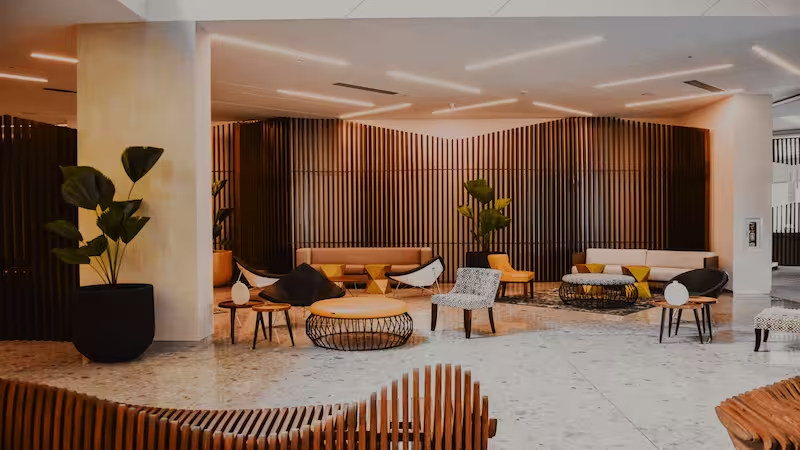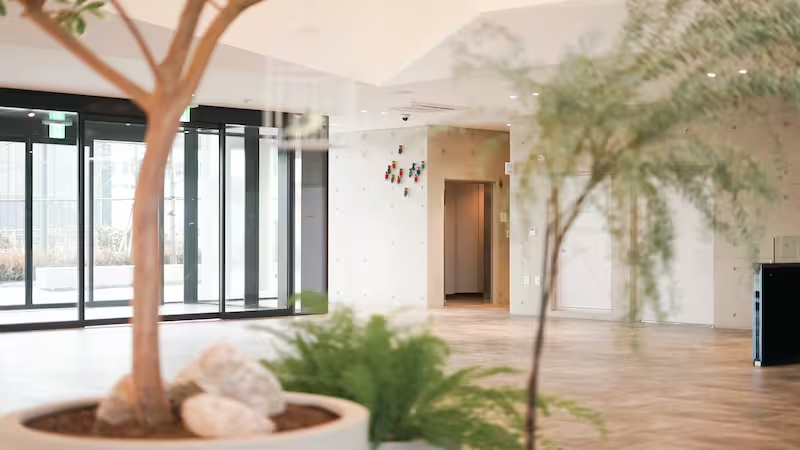
Table of Content
In a competitive retail landscape creating an immersive shopping experience is essential in attracting and retaining customers. An innovative retail store design can help you gain a competitive edge and increase revenue. Retail design involves a strategic and innovative process of planning and structuring physical spaces within commercial establishments to enhance customer experience and boost sales. We will explore the range of retail designs you can incorporate into your retail business to boost revenue and ensure long-term success.
Strategic Store Layout
An innovative store layout can guide customers in a strategic and immersive manner. A good layout places high-margin or high-demand products on display shelves at eye level to attract customers, encouraging impulse purchases and increasing revenue. It can also enhance customer shopping experience, resulting in customer satisfaction and loyalty. Organizing your store and creating clear pathways can help customers easily navigate the store, preventing frustration and making their shopping experience engaging. For instance, Ikea employs a one-way system where customers are guided through a particular path in the store, beginning with showrooms, the market place and finally, the checkout. This technique increases the likelihood of impulse buying.
Green and Sustainable Design

Implementing environmentally friendly practices and materials such as energy-efficient lighting, opting for eco-friendly paints and finishes, and using upcycled and recycled materials for displays and fixtures can demonstrate your sustainability. Patagonia is one of the brands that use this design to connect with environmentally conscious and upscale customers. Additionally, a green and sustainable design can create a distinctive and captivating shopping environment to make your store stand out in a competitive landscape. Customers are more likely to shop in a retail store that aligns with their values, increasing their chances of becoming loyal customers and increasing customer retention and revenue. According to Nielson’s report, 66% of customers are willing to overpay for sustainable products. This design can unlock doors for increased profitability and long-term success.
Sensory Branding Elements
Sensory branding elements are influential in creating an immersive and memorable shopping experience. Elements such as music, aroma, light, and visuals can engage customers' senses, resulting in an emotional connection with your brand and its offerings, eventually swaying purchasing decisions in your favor. Soothing background music sets the desired shopping mood and evokes emotions, creating a relaxing environment that encourages customers to stick around longer, increasing the likelihood of purchasing your products. You can go further and add a pleasant but subtle fragrance that triggers pleasant memories and positive associations with your brand. Well-illuminated displays can also entice customers to delve deeper into the store and discover new products. Sensory retail branding elements might be what you need to encourage repeat visits and boost revenue.
Inclusive and Accessible Design
An inclusive and accessible design incorporates features like elevators or ramps for wheelchair users, simple signage with high contrast, and large fonts and wide aisles to ensure easy navigation. According to the Global Economics of Disability Action’s (GEDA) survey, about 15% of the world’s population experience some form of disability. This percentage represents a large consumer base often overlooked. This design can help you tap into this market and enhance customer retention and loyalty among customers who appreciate the commitment to diversity and inclusion. A study by Accenture shows that 41% of customers switch brands due to a lack of diversity and inclusion. When customers feel welcome, they are more likely to make repeat visits and recommend your brand to their friends and family, ultimately leading to higher revenue and taking your business to a new level.
Effective Visual Merchandising
Effective merchandising involves strategically organizing your products, signage, and displays to create a captivating and engaging shopping environment. You can curate visually appealing product displays to pique customers' interests and draw them to your store. Inside the store, you can group related products and employ cross-selling techniques to encourage additional purchases. Sephora showcases exceptional merchandising using well-lit, interactive testers, and organized shelves to make shopping an engaging endeavor. Their strategic product placement increases chances of impulse buying and their incorporation of advanced technology like the Sephora Virtual Artist App demonstrates their commitment to enhancing customer experience.
Eye-Catching Window Displays

A visually appealing window display acts as a magnet, attracting potential customers to your store and stirring their curiosity. To create a lasting impression, you can creatively showcase your store's new arrival, best products, and promotions on these window displays. A well-curated window design can communicate your store's brand identity and unique selling points, encouraging customers to explore the store further. Rose City Goods, a brand known for artistic furniture, relies heavily on its eye-catching window displays. Over the years, this strategy has helped them convey the brand's personality to customers by showcasing their products and encouraging customers to stop by their store. Visually appealing displays can increase the chances of impulse buying, resulting in increased revenue.
Digital Signage
While static signage has, over the decades, enabled businesses to showcase their products and promotions, its results are incomparable to digital signage. This technology allows you to create versatile content, including product demonstrations, real-time updates, and promotional offers, creating a sense of urgency and stimulating impulse buying. You can tailor your content and design it depending on customer preferences, shopping behavior, and demographics to enhance personalized messaging.
Additionally, retail digital signage allows you to add high-quality product images, customer testimonials, and videos to highlight the full extent of your offerings, increasing cross-selling opportunities. Best Buy is a prime example of a company that employs digital signage in its day-to-day operations. This retail business uses this technology to display expert recommendations and customer reviews to help shoppers in making purchase decisions. This approach streamlines Best Buy’s shopping process and enables them to adapt to the changing market trends.
Cozy and Inviting Seating Areas

You can place comfortable seating spaces strategically in your store where shoppers can relax as they contemplate their purchases. These seating areas can also encourage shoppers to stay longer and explore your products, increasing the chances of unplanned purchases. Whether cozy nooks or a comfortable sofa, seating areas can create a sense of hospitality, making shoppers feel cared for and valued. This can encourage repeat visits which can increase revenue in the long run. Apple Stores employ this idea by providing spacious and comfortable seating areas with chairs and large wooden tables where customers can take a break from shopping or try out their products.
Seamless Checkout Process
Implementing an efficient and user-friendly checkout procedure can reduce waiting times and simplify payment procedures, enhancing customer experience and satisfaction. You can offer multiple payment methods like contactless payments, mobile wallets, and credit cards. You can also integrate Radio Frequency Identification (RFID) technology to expedite the checkout process, encouraging shoppers to complete their purchase process and imprint a positive impression on their minds. One company with a seamless checkout process is Amazon. The retail giant uses advanced technology, including sensor fusion and computer vision, to detect the items a shopper takes and charge them on their respective Amazon accounts.
Social Media Integration
Implementing social media integrations in your retail business can help you tap into your customers’ online networks and create a connection between your store and the digital world. You can set up interactive displays encouraging customers to share their in-store experiences online, providing designated photo stops. This can promote your products and increase brand awareness. Urban Threads is a prime example of a brand that has integrated its physical store with its online store. This brand provides a 'Style the Runway' corner where shoppers can try on different outfits, take photos, and post them online with specific hashtags. This strategy has significantly increased foot traffic to their physical store and enhanced brand awareness.
See your revenue grow for the better
Implementing an engaging and welcoming store design is the key to increasing revenue in your retail store. You want to ensure the design attracts customers and enhances customer experience and satisfaction. The retail design ideas outlined above can help you increase repeat visits and boost your revenue in the long run.




.avif)



